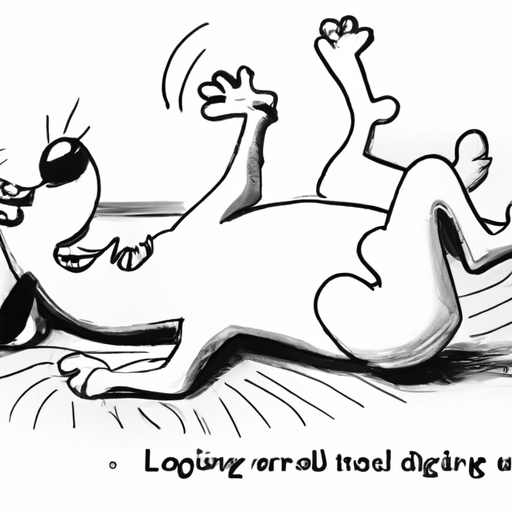Have you ever noticed your canine friend’s leg shaking when you hit that sweet spot during your petting session? It’s a common phenomenon that leaves many dog owners curious, and sometimes concerned. Let’s delve into this intriguing canine behavior and help you understand why your dog’s legs might shake when scratched.
Understanding Canine Reflexes
Firstly, let’s get into the biology of your furry friend. Dogs, like humans, have a set of reflexes that are involuntary responses to specific stimuli. One of these reflexes, known as the scratch reflex, is what you’re observing when your dog’s leg shakes as you scratch them.
The Scratch Reflex
The scratch reflex is a neurological reaction that dogs have to being scratched or tickled in certain areas, especially the belly and the area just above the base of the tail. This reflex causes their leg to move or shake involuntarily, mimicking the action of scratching.
- The Biology Behind It: The nerves in the area you’re scratching send a message to your dog’s spinal cord, which in turn signals their leg to move. This reflex is similar to the knee-jerk reflex in humans, where a tap to the knee causes the leg to kick out.
The Purpose of the Scratch Reflex
The scratch reflex serves an important purpose. It’s thought to protect dogs from irritants or parasites on their skin. If a flea or tick were to bite your dog in the area you’re scratching, their leg would automatically start scratching to try to remove the pest.
Are There Health Implications?
While the scratch reflex is a normal part of canine biology, excessive or unusual leg shaking might be a cause for concern.
-
Allergies: Dogs, like humans, can suffer from allergies that cause itchy skin. If your dog is shaking their leg more than usual, they could be trying to relieve itchy skin caused by an allergy.
-
Irritants: Dogs can also react to irritants on their skin, such as certain types of grass or plants, chemicals, or even the fabric of a new bed or toy.
-
Pain: In some cases, a dog might shake their leg because they’re in pain. If the shaking is focused on one specific area, it could be a sign of an injury or a problem like arthritis.
If you notice any unusual shaking, it’s always best to consult with a vet. They can help identify the root of the issue and suggest appropriate treatments.
The Role of Bonding
Not all leg shaking is about reflexes or health issues, though. Sometimes, it’s simply about bonding.
When you scratch your dog in a spot they can’t easily reach themselves, it can feel really good to them. The leg shaking might be their way of showing you that they’re enjoying the attention. In fact, some dogs might even seek out these scratches because they find them so pleasurable.
This interaction can strengthen the bond between you and your dog. So, the next time you see your dog’s leg shaking when you scratch them, remember that you’re not just giving them a good scratch, you’re also building your relationship.
FAQs
Q: Is it bad to scratch the spot that makes my dog’s leg shake?
A: Not at all. Unless your dog shows signs of discomfort, it’s completely fine to scratch this spot. It’s a natural reflex and often a sign that your dog is enjoying the scratch.
Q: My dog’s leg shakes even when I’m not scratching them. Should I be worried?
A: If your dog’s leg is shaking excessively or without apparent reason, it’s best to consult a vet. It could be a sign of a health issue.
Q: Can I use the scratch reflex to check my dog’s neurological health?
A: While the scratch reflex is a neurological response, it’s not a reliable indicator of overall neurological health. If you’re concerned about your dog’s neurological health, a vet should be consulted.
Q: Does every dog have a ‘sweet spot’ that will cause the leg to shake?
A: Most dogs do, but not all. The presence or absence of this reflex can vary between individual dogs.
Q: My dog doesn’t shake their leg when I scratch them. Is something wrong?
A: Not necessarily. As mentioned above, not all dogs have this reflex. If your dog seems healthy and happy, there’s likely nothing to worry about.



